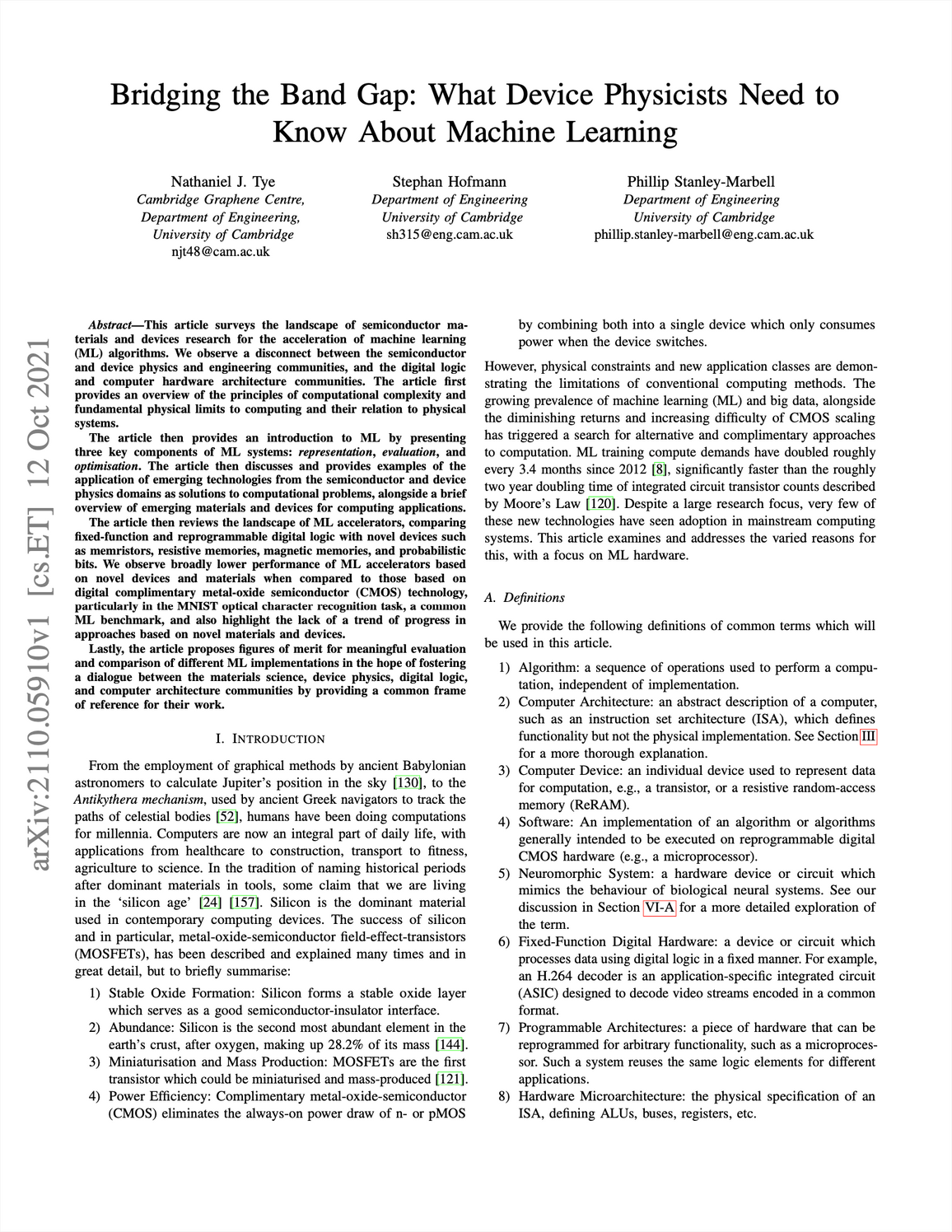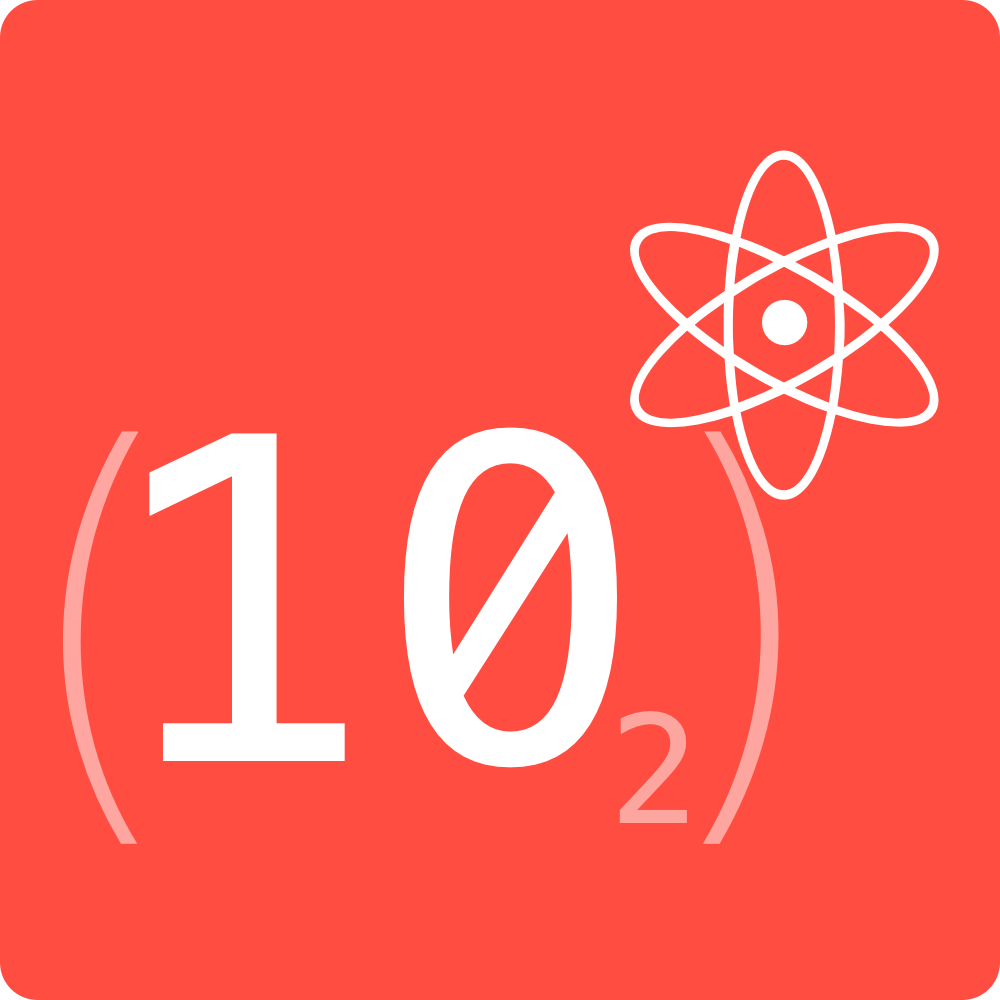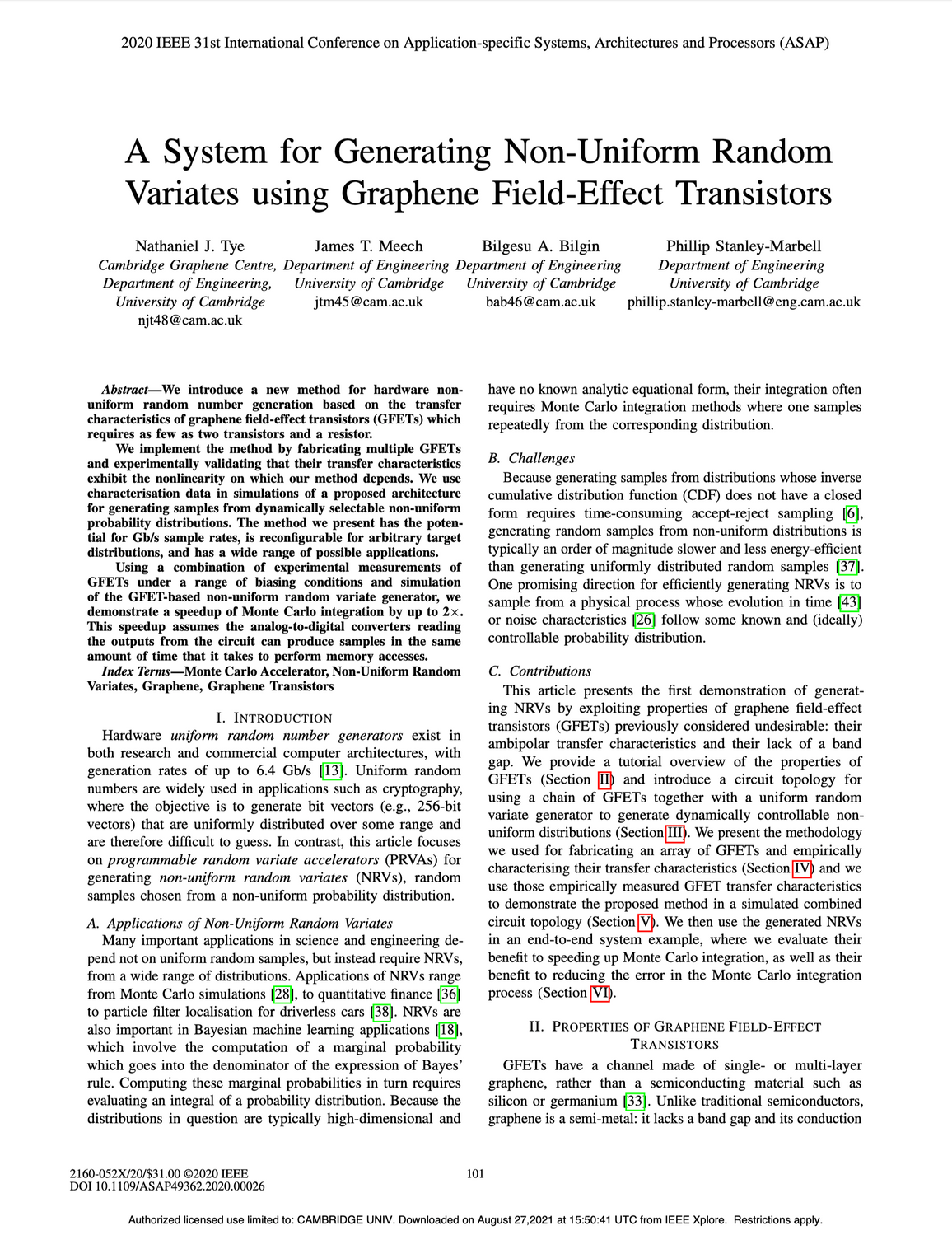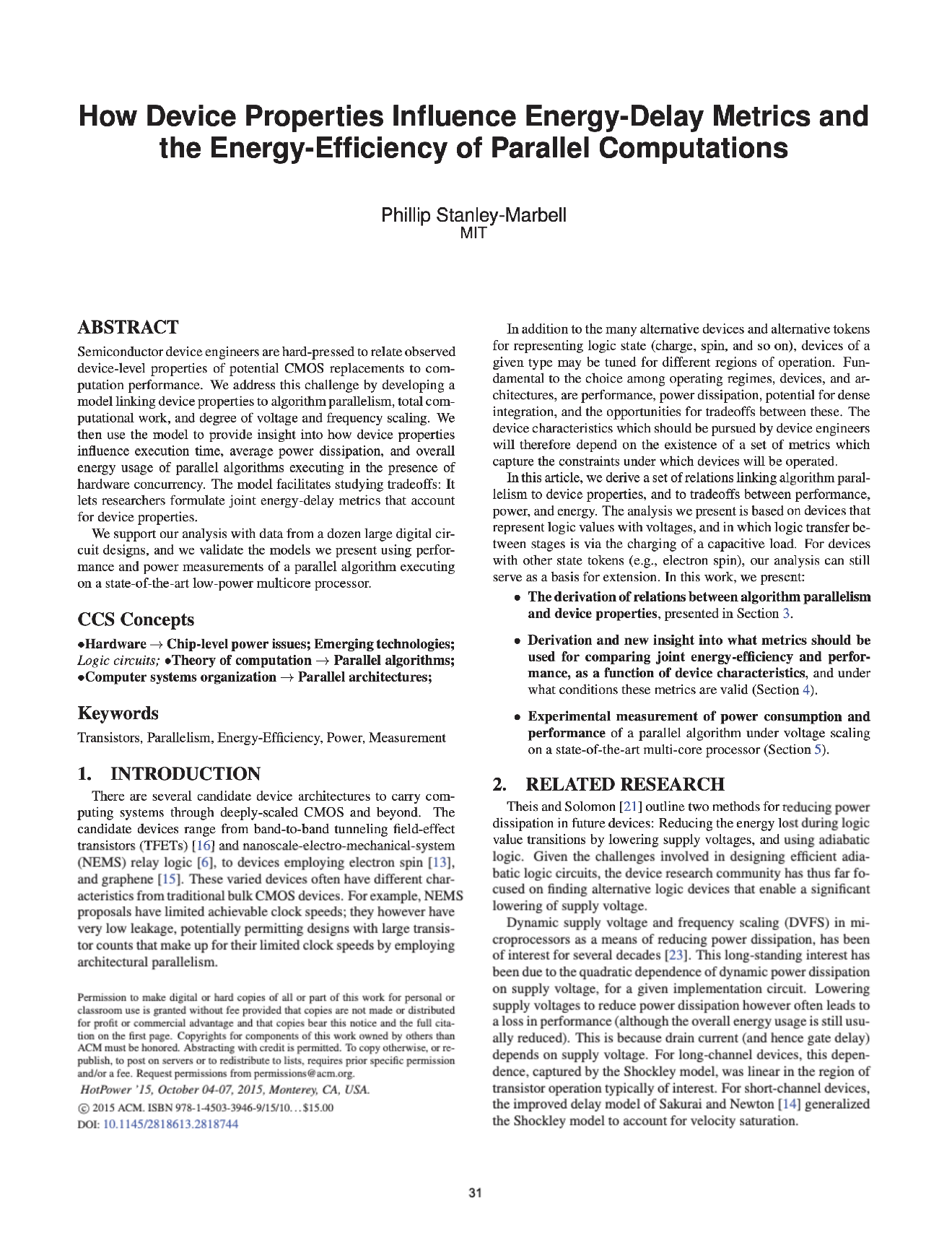Bridging the Band Gap: What Device Physicists Need to Know About Machine Learning


Abstract
This article surveys the landscape of semiconductor materials and devices research for the acceleration of machine learning (ML) algorithms. We observe a disconnect between the semiconductor and device physics and engineering communities, and the digital logic and computer hardware architecture communities. The article first provides an overview of the principles of computational complexity and fundamental physical limits to computing and their relation to physical systems. The article then provides an introduction to ML by presenting three key components of ML systems: representation, evaluation, and optimisation. The article then discusses and provides examples of the application of emerging technologies from the semiconductor and device physics domains as solutions to computational problems, alongside a brief overview of emerging devices for computing applications. The article then reviews the landscape of ML accelerators, comparing fixed-function and reprogrammable digital logic with novel devices such as memristors, resistive memories, magnetic memories, and probabilistic bits. We observe broadly lower performance of ML accelerators based on novel devices and materials when compared to those based on digital complimentary metal-oxide semiconductor (CMOS) technology, particularly in the MNIST optical character recognition task, a common ML benchmark, and also highlight the lack of a trend of progress in approaches based on novel materials and devices. Lastly, the article proposes figures of merit for meaningful evaluation and comparison of different ML implementations in the hope of fostering a dialogue between the materials science, device physics, digital logic, and computer architecture communities by providing a common frame of reference for their work.
Cite As:
N.J. Tye, S. Hofmann, P. Stanley-Marbell, "Bridging the Band Gap: What Device Physicists Need to Know About Machine Learning", ArXiv Preprint, Oct. 2021, doi:arXiv:2110.05910.
Bibtex:
@misc{tye2021bridging,
title={Bridging the Band Gap: What Device Physicists
Need to Know About Machine Learning},
author={Nathaniel Tye and
Stephan Hofmann and
Phillip Stanley-Marbell},
year={2021},
eprint={2110.05910},
archivePrefix={arXiv},
primaryClass={cs.ET}
}




